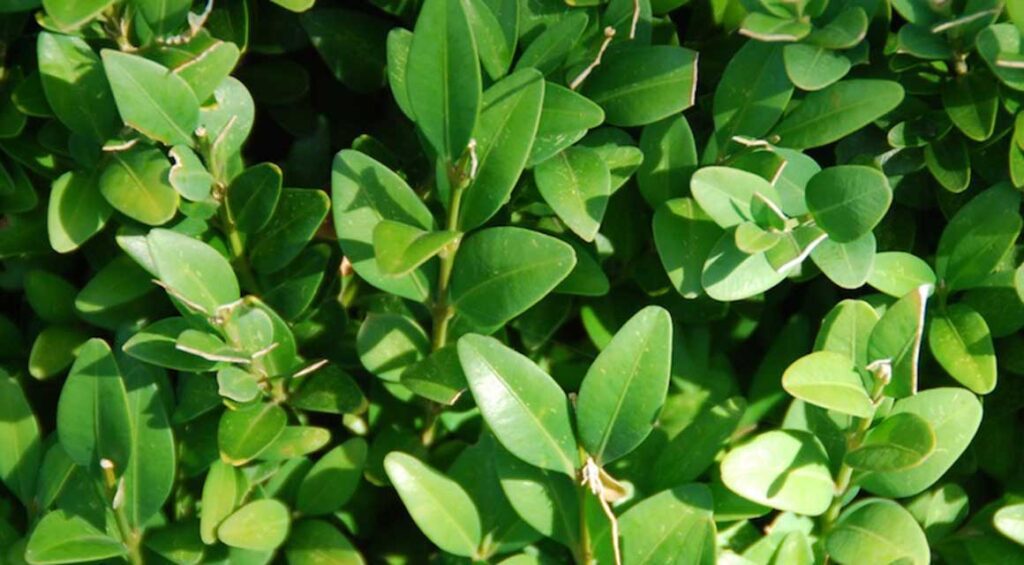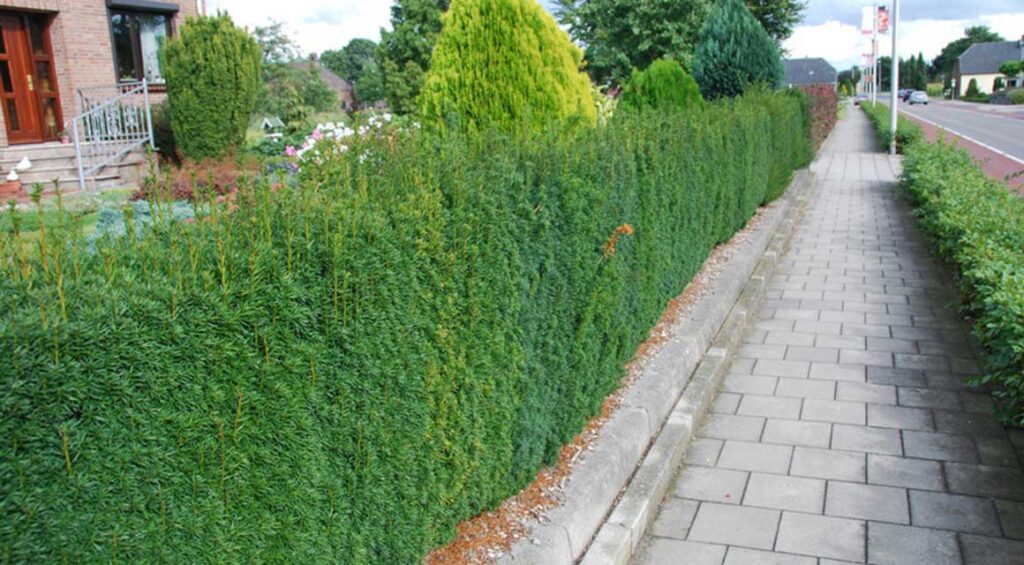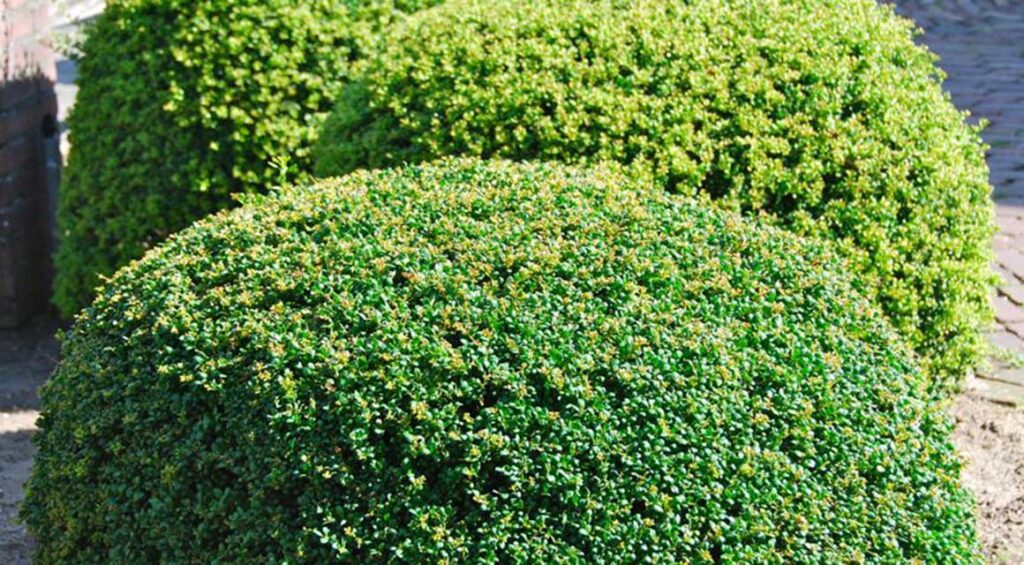In the properties of our hedge plants is sometimes written that the corresponding plant or part of the plant is poisonous. This may sound very scary, but in fact quite a lot of plants are poisonous. So the question is: are poisonous hedge plants dangerous? Let’s find out!

Contents
Popular poisonous hedge plants
When you hear that a hedge plant is poisonous, it may first occur to you that it would be better to avoid the plant altogether. In some cases this is true, but generally the most poisonous hedge plants are the most popular because they have other good qualities. For example, let’s direct our attention to yew, cherry laurel, privet or boxwood. There are few green gardens in Europe, where you can not find one of these plants, despite their toxicity!
This is not so surprising, because a hedge is not intended for consumption. Yew, cherry laurel and privet are great for creating an attractive privacy hedge. Yew and cherry laurel are evergreen hedge plants, and semi-evergreen privet generally retains its leaves during the winter. In addition, these hedge plants easily grow several feet tall and have a dense growth habit. So, if you are looking for a hedge to replace a fence, you can choose a cherry laurel, a yew or a privet hedge. Boxwood is ideal for low, decorative hedges and topiary.
So how toxic are these plants? It varies from species to species. The berries of privet can be deadly to humans. Birds love them, by the way. Also, for the yew, this plant is toxic enough to kill a human. The funny thing is that the berries themselves are not that dangerous. The seeds in the berries are, unfortunately. The boxwood and cherry laurel are not directly deadly, but they can cause skin irritation. After pruning these plants is advisable to wash your hands.

When is it better not to have poisonous hedge plants?
Poisonous hedge plants are basically not a problem, because the poison usually has to enter the body through the mouth. So, as long as you do not want to eat any part of your hedge, it is safe to grow a poisonous hedge plant in your garden. However, there may be a danger if you often have animals or children in the garden. Children are curious and will put all sorts of things in their mouths. This is not such a good idea with a large yew hedge or privet with berries in the garden. The berries of the female yew also look extremely tasty …
Animals also sometimes tend to eat things that are not good for them. If you search for information about poisonous plants, you will quickly come across sites aimed at horse owners. Other herbivores are also at risk. For example, a rabbit that is too much boxwood has a high probability of not surviving. With stray (domestic) animals in your yard or on your property, it is certainly important to make sure that you do not have poisonous plants in your yard. In addition, different plants are more or less toxic to different animals.

When are poisonous hedge plants not a problem?
As already mentioned, poisonous plants are generally only dangerous if they are eaten. As long as there are only people or animals in the garden that do not eat the plants, there is basically no problem. At this point, hedge plants with thorns or sharp leaves, such as holly or firethorn, pose a greater risk. Of course, you can simply make it clear to the children that it is very dangerous to eat plants. I’m sure most of them will understand this and won’t put leaves in their mouths.
One advantage that poisonous plants have is that they often taste very bad. The chance of a child eating enough of a plant to get poisoned is much lower because the plant or berry is often spit out immediately. In addition, children are also more likely to eat the berries of a plant than the leaves. For example, a male Taxus media ‘Hillii’ has no berries, but is just as dense and green as a female Taxus media ‘Hicksii’. Cutting the flowers out of privet also prevents berries from developing.

Alternatives for poisonous hedge plants
There are a variety of hedge plants that are safe for children and animals to eat. If you’re looking for an informal hedge, for example, you might choose yellow dogwood, copper rock pear, or weigelie. Many evergreen hedge plants are more or less poisonous, but if you choose a hedge plant without berries, such as Thuja or Leylandii, the risk of poisoning is greatly reduced. The likelihood of children eating enough leaves from a conifer to get sick from it is not very high. As a substitute for boxwood, you could opt for Japanese holly. In addition, this is less susceptible to disease.
Of course, if you have any doubts about a particular hedge plant variety or questions about its toxicity, you can always contact our customer service. We can decide with you whether it makes sense to choose a particular hedge plant or not. This is part of our service!

